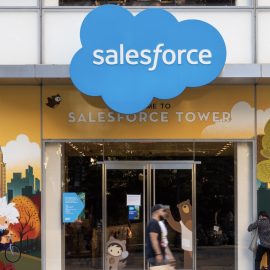

This article is an excerpt from the Shortform book guide to "Permission Marketing" by Seth Godin. Shortform has the world's best summaries and analyses of books you should be reading.
Like this article? Sign up for a free trial here.
What do billboards and TV commercials have in common? How much are you annoyed by their intrusion?
Even if you haven’t heard the specific term before, “Interruption Marketing” probably sounds familiar. You’ve had your experience disrupted by ads that you don’t expect or want. You certainly didn’t ask for them. Seth Godin explains why this type of marketing had its heyday—but it’s finally time to move on.
Read more to learn three reasons why Interruption Marketing is no longer as effective as it used to be.
The Old Way: Grab Attention With Interruption Marketing
Since the turn of the 20th century, the dominant form of marketing has been what Godin calls “Interruption Marketing.” This type of advertising attempts to pull consumers’ attention away from what they want to spend it on For instance, a commercial might break the spell of a riveting TV show, and a billboard on the side of the road might interrupt a gorgeous view.
Godin explains that Interruption Marketing rose to prominence once companies could easily serve customers that didn’t live nearby. The assembly line allowed companies to cheaply mass-produce consumer goods, and automobiles allowed them to reliably distribute those goods to a wider customer base than ever before. These companies used mass media channels like radio, television, and magazines to create public demand for the name-brand goods they now produced and transported.
Interruption Marketing was profitable because its repeated interruptions successfully built consumer trust, according to Godin. Consumers who encountered enough advertisements from the same brand came to believe that the brand was popular and reliable. This led them to choose familiar brands whenever they were available, and due to modernized production and distribution, big brands became always available.
| How Interruption Marketing Changed Product Design Godin elaborates on the rise and fall of Interruption Marketing in his 2002 book Purple Cow, showing how these ideas impacted the field of product design. When big companies started mass-producing uniform products, then distributing and advertising them to as large of a general audience as possible, they were forced to design products that appealed to everyone. As a result, products became more bland, cheap, and overall less valuable to consumers than they could be. According to Godin, products that do a so-so job at fulfilling everyone’s needs often fail to fulfill any individual’s needs exceptionally well. For example, an early-20th-century company that decided to mass-produce breakfast foods would know that unusual or interesting spice combinations could drive away customers who want something simple. Thus, they might produce boring, mildly flavorful oatmeal that a mass audience would like enough to purchase but that no one would really love. With this in mind, Godin argues that other companies can compete with big businesses by designing what he calls “Purple Cows”: remarkable, innovative products that big businesses would deem too much of a risk to mass-produce. Anything that’s unusual and useful enough to create customers who are passionate about it can be a Purple Cow. For instance, you could enter the breakfast market by developing plant-based eggs for vegans. Truly remarkable products will naturally appeal to “early adopters”—consumers who are more likely to take a risk on products with new and unique benefits, even if you haven’t built up years of brand trust through advertising. If these early adopters like your product, they’ll recommend it to others, giving it the chance to become popular among the general population. Ideally, your new product will disrupt an existing market and earn profits comparable to products from existing big businesses. |
Interruption Marketing Is Less Successful Today
Although many major 20th-century corporations owe their success to Interruption Marketing, there are three main reasons why the practice is far less profitable today.
Reason #1: There Are Too Many Advertisements
First, Godin asserts that the world is oversaturated with advertisements. Once people discovered how profitable Interruption Marketing was, every major company started doing it. Consequently, there are far more brands competing today than in the early 20th century. Because there are so many advertisements fighting for our time and attention, consumers have learned to ignore the majority of branded messages they see to avoid getting overwhelmed.
(Shortform note: Even if consumers are largely successful at tuning out the majority of advertisements around them, some people argue that such oversaturation still lowers life satisfaction for many. In The Paradox of Choice, Barry Schwartz asserts that people in wealthy countries are generally less happy than they used to be. He claims this is at least partially because they have far more products or services to choose from than in the past. Each available option forces them to consider what they’re giving up in rejecting other options. Consequently, each additional available option decreases their satisfaction with whatever decision they make. Advertisements intended to promote awareness of the options available to consumers may exacerbate this dissatisfaction.)
Reason #2: We Have More Ways to Consume Media
Second, Interruption Marketing fails because consumers today have far more ways to consume media, argues Godin. During the rise of television, as more channels became available, fewer viewers tuned in to each one. This meant that every advertisement running on those channels reached fewer consumers and won fewer sales. The rise of the Internet fragmented consumers’ attention even more—modern users have countless options when looking for something online, and placing an advertisement on a single website will reach far fewer people than it would have through mass media in the 20th century.
(Shortform note: In his 2004 article The Long Tail (which inspired his book of the same name), Chris Anderson theorized that this audience fragmentation would accelerate as time went on. Theoretically, sellers would adapt to rising demand for niche, non-physical products (like movies and music) by offering a wider selection at a lower price, resulting in even more audience fragmentation. However, this doesn’t seem to have happened. Some research shows that, even though consumers have a wider range of options, the few most popular movies, songs, and albums boast a greater market share of sales than in the past—and consumers report enjoying them more than obscure media.)
Reason #3: Most Brands Are Good Enough
Third, Godin contends that Interruption Marketing fails because the average quality of consumer goods rose over time and hit a plateau. Competing brands all successfully accomplish what the consumer needs them to, and they do so almost equally well. Because all available options are good enough, consumers are content with sticking to whatever brand they regularly buy. They’re not interested in hearing what other brands can offer them and are unreceptive to Interruption Marketing.
(Shortform note: In his 2010 book Linchpin, Godin expands on this idea. He argues that since there are so many brands offering products that are “good enough,” the brands earning the vast majority of sales are usually those that can afford to offer the lowest prices. Furthermore, since it’s nearly impossible for smaller businesses to compete with large corporations on price, they must aim to offer remarkable service that exceeds customer expectations in ways they can’t find anywhere else. Such service can push the quality of your brand above the average in your industry, motivating consumers to switch brands and even pay a premium price.)

———End of Preview———
Like what you just read? Read the rest of the world's best book summary and analysis of Seth Godin's "Permission Marketing" at Shortform.
Here's what you'll find in our full Permission Marketing summary:
- Why common intrusive marketing methods don't work well anymore
- How to build a loyal customer base that wants to see your marketing
- Three steps to building and profiting from a permission marketing campaign






